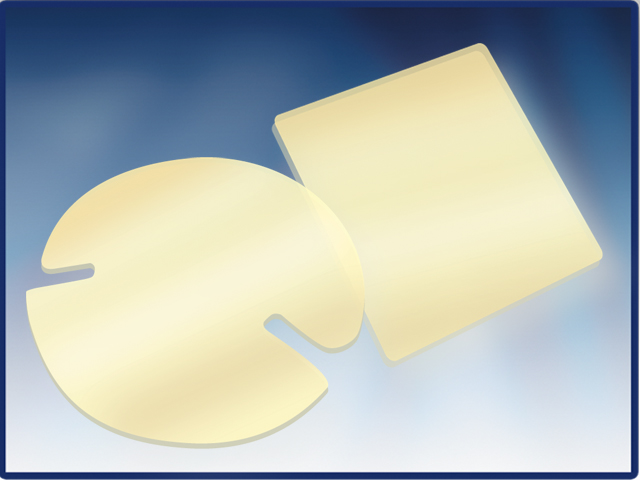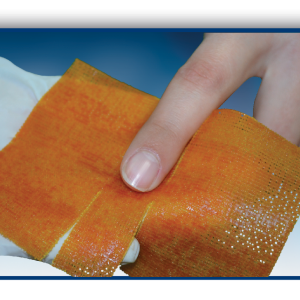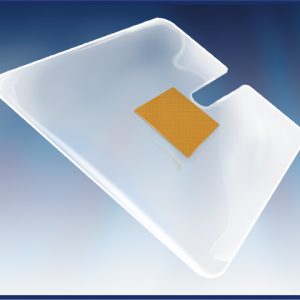Description
Product Info
Pharmacoll® Ag is antimicrobial hydrocolloid wound dressing, made of hydrocolloid particles and zeomic (silver zeolite), distributed throughout the rubbery matrix of the dressing. Pharmacoll® Ag is laminated with bacteria proof and water proof polyurethane film outermost layer, which allows showering while the dressing is applied.
Pharmacoll® Ag…Seven-Benefits
1. Targeted antimicrobial action: Unlike most of Silver antimicrobial wound dressings in advanced wound management market, where dressing is highly dosed with silver to support antimicrobial effect, Pharmacoll® Ag contains 0.5% w/w Zeomic. Silver ions of Zeomic become activated upon gelling of hydrocolloid particles, thus they kill microorganisms absorbed in gel matrix of the dressing, rather than leaching out to kill bacteria at wound site.
2. Broad spectrum antimicrobial effect: Thanks to the antimicrobial power of silver ions contained in Zeomic, Pharmacoll® Ag shows antimicrobial effect against a wide spectrum of microorganisms including Gram-negative bacteria such as Escherichia coli and Pseudomonas aeruginosa; Gram-positive bacteria such as Staphylococcus aureus, MRSA and VRE; and fungi such as Aspergillus niger and Penicillium nigricans.
3. Continuous antimicrobial protection: Pharmacoll® Ag release of silver is highly controlled, as silver and other ions with antimicrobial power are bonded into zeomic mineral structure and stabilized. They are seldom eluted out with wound exudates; In fact large amounts of silver are unnecessary and can actually be cytotoxic to fibroblasts; That is why antimicrobial effect of Pharmacoll Ag is long lasting up to seven days, depending on wound condition.
4. Optimum healing environment: Pharmacoll® Ag absorbs wound exudates and turn to gel. This provides moist wound environment which enhances wound healing. Furthermore, the dressing can be removed easily without inducing pain or trauma to the wound site.
5. Deodorizing effect: Pharmacoll® Ag shows both antimicrobial power and deodorizing power. It can be said that deodorizing effect is derived from zeolite’s intrinsic physical adsorptive ability and chemical reaction between ion-exchanged metals and malodor gases.
6. Photostable: Unlike other dressings with silver nanocrystals, Pharmacoll® Ag keeps translucent color of hydrocolloid and does not darken on exposure to light. Thanks to Zeomic’s unique technology where photo stabilizing agents are incorporated in Zeomic nanoporous structure.
7. Non-staining to skin: Since silver is controllably released from zeolite nanoporous structure, it does not stain skin. Other silver dressings that lack control over release of silver may cause staining of surrounding tissues or lead to cytotoxicity of tissue cells typically found in the wound bed. These cells are necessary for wound healing processes such as proliferation, angiogenesis and matrix protein deposition.
- Pharmacoll® Ag can be used to progress wounds with delay healing due to bacteria, or wounds where the risk of infection exists.
- Low to moderately exuding wounds like:
- Leg ulcers.
- Pressure sores.
- Partial thickness burns.
- Skin graft donor sites.
- Postoperative wounds and skin abrasions.
- Third degree burns, exposed muscles or tendons.
- Experience of using silver wound dressing is limited in case of neonates and babies.
- Sensitivity to any of the product’s ingredients.
– On application, Pharmacoll Ag absorbs wound exudates and turn to gel. 
– Bacteria from the wound are absorbed into the gel matrix where silver ions in Zeomic are activated to kill bacteria.
– Moreover, the gel matrix provides moist wound environment in favour of wound healing. Zeomic: Nothing to worry about Zeomic is an inorganic antimicrobial agent that can be used in a powder or emulsion form by incorporating silver ions, with antimicrobial power, into the three-dimensional alumino-silicate nanoporous structure of zeolite.
Mechanism of action of silver: 
- Damage to bacterial cell membrane, could lead to the leakage of cytoplasm from the cell, which would result in dehydrated and shrunken cells.
- Silver atoms bind to thiol groups (-SH) in enzymes, and subsequently, cause the deactivation of enzymes.
- Silver associates with DNA once they enter the cell, thus preventing bacterial cell replication.
3 years









Reviews
There are no reviews yet.